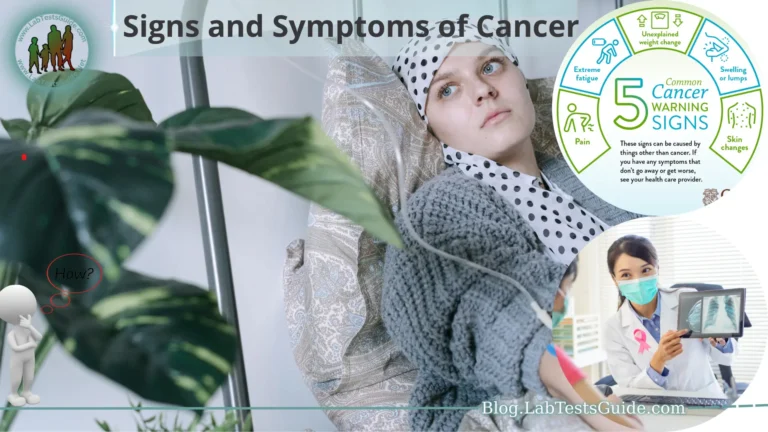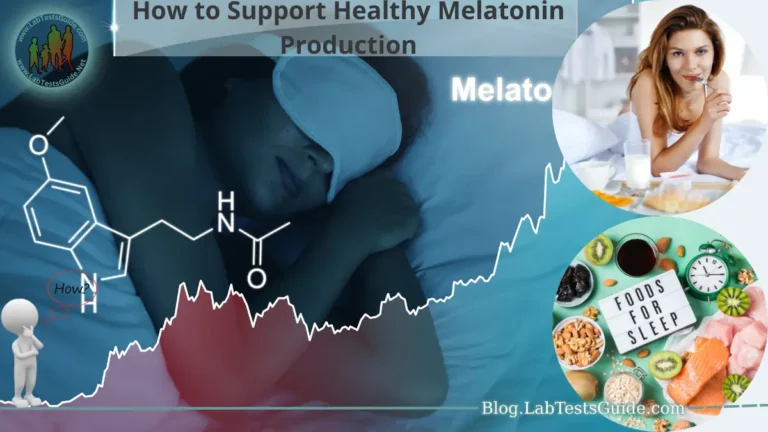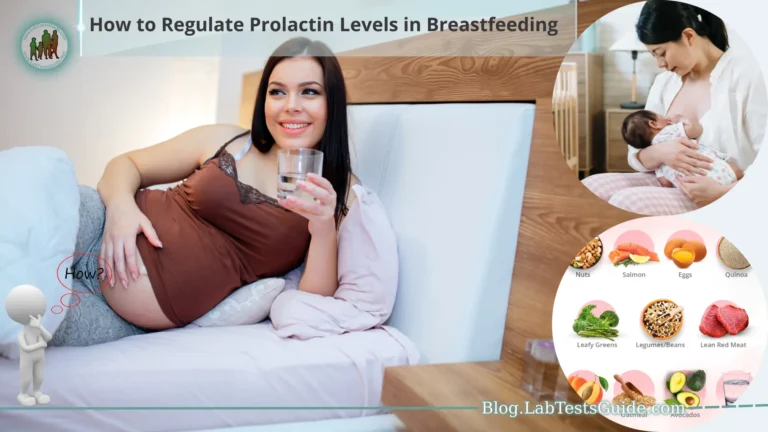How to Boost Estrogen Levels ? Low estrogen levels can result in a range of symptoms such as hot flashes, vaginal dryness, mood swings, and decreased libido. In some cases, it may even increase the risk of osteoporosis and cardiovascular diseases. Conversely, high estrogen levels can also cause issues such as breast tenderness, bloating, and increased risk of certain types of cancer. Achieving a balanced estrogen level is crucial for both men and women to support optimal health and well-being.

The purpose of this guide is to provide valuable insights and practical strategies on how to boost estrogen levels naturally. While there are medical interventions such as hormone replacement therapy available, this guide focuses on lifestyle changes, dietary modifications, supplements, and other natural approaches that can help support healthy estrogen levels. It is important to note that everyone’s hormonal needs and health circumstances are unique, and consulting with a healthcare professional is advised before making any significant changes.
What is Estrogen and Its Role in the Body?
Estrogen is a group of hormones primarily associated with the female reproductive system, although they are present in both males and females. It plays a crucial role in various aspects of the body’s development, functioning, and overall health.
The role of estrogen in the body is multifaceted and extends beyond reproductive functions. Some key functions of estrogen include.
- Reproductive System: Estrogen plays a vital role in the development and regulation of the female reproductive system. It helps stimulate the growth of the uterus, fallopian tubes, and vagina. Estrogen is responsible for the development of secondary sexual characteristics in females, such as breast development and the distribution of body fat.
- Menstrual Cycle: Estrogen helps regulate the menstrual cycle, influencing the growth and shedding of the uterine lining. It plays a crucial role in follicle development and ovulation, the process in which a mature egg is released from the ovary.
- Bone Health: Estrogen plays a significant role in maintaining bone health by promoting the activity of bone-building cells called osteoblasts and inhibiting bone breakdown by osteoclasts. It helps prevent bone loss and reduces the risk of osteoporosis.
- Cardiovascular Health: Estrogen contributes to cardiovascular health by maintaining healthy blood vessel function and regulating cholesterol levels. It helps keep blood vessels flexible and dilated, which supports healthy blood flow.
- Brain Function: Estrogen influences brain function and cognition. It affects neurotransmitters, such as serotonin and dopamine, which play a role in mood regulation. Estrogen also plays a role in memory formation and cognitive processes.
- Skin Health: Estrogen helps maintain skin elasticity, moisture, and thickness. It supports collagen production and promotes wound healing.
How to Boost Estrogen Levels Naturally:
Diet and Nutrition:
- Include Foods Rich in Phytoestrogens: Consuming foods that contain phytoestrogens can help naturally increase estrogen levels. Examples include soy products, flaxseeds, chickpeas, lentils, and berries.
- Consume Healthy Fats: Incorporate sources of healthy fats in your diet, such as avocados, nuts, seeds, and fatty fish like salmon. Healthy fats support hormone production, including estrogen.
- Add Cruciferous Vegetables: Cruciferous vegetables like broccoli, cauliflower, kale, and Brussels sprouts contain compounds that support estrogen metabolism and balance.
- Incorporate Flaxseeds: Flaxseeds are rich in lignans, which have estrogen-like properties. Add ground flaxseeds to your meals or smoothies to boost estrogen levels.
- Include Soy Products: Soy contains compounds called isoflavones that can mimic estrogen in the body. Incorporate soy products like tofu, tempeh, and edamame into your diet.
- Consider Red Clover: Red clover is a herbal supplement that contains compounds with estrogenic effects. Consult with a healthcare professional before using any herbal supplements.
Exercise and Physical Activity:
Engage in regular exercise and physical activity to support hormonal balance. Both aerobic exercises and strength training have been shown to positively impact estrogen levels.
Stress Reduction:
Chronic stress can disrupt hormone balance. Practice stress-reducing techniques such as meditation, deep breathing exercises, yoga, or engaging in activities you enjoy to help lower stress levels.
Sleep and Rest:
Prioritize quality sleep and adequate rest. Sleep deprivation and poor sleep quality can disrupt hormone production and regulation, including estrogen.
Supplements to Support Estrogen Levels:
Certain supplements may support estrogen levels, including black cohosh, dong quai, maca root, vitex agnus-castus (chasteberry), evening primrose oil, and omega-3 fatty acids. However, it’s important to consult with a healthcare professional before taking any supplements to ensure they are safe and appropriate for you.
Hormone Replacement Therapy (HRT):
In some cases, hormone replacement therapy may be recommended to boost estrogen levels. HRT should only be considered under the guidance and supervision of a qualified healthcare professional.
Understanding Estrogen:
Understanding Estrogen:
Estrogen is a group of hormones that play a significant role in the body, particularly in the female reproductive system. It is also present, albeit in smaller amounts, in males. Estrogen belongs to the class of hormones known as steroids and is primarily produced in the ovaries in women. In men, it is produced in the testes and adrenal glands.
The three main types of estrogen hormones are:
- Estradiol: This is the most potent and abundant form of estrogen in women of reproductive age. It regulates the menstrual cycle, promotes the development of secondary sexual characteristics, and contributes to bone health.
- Estrone: This form of estrogen is primarily produced during menopause when the production of estradiol declines. It is also produced in smaller amounts throughout a woman’s life. Estrone plays a role in maintaining bone density and overall estrogen balance.
- Estriol: Estriol is the weakest form of estrogen and is produced mainly during pregnancy. Its levels rise significantly during pregnancy to support the growth and development of the fetus.
Functions of Estrogen:
Estrogen has several important functions in the body.
- Development of Female Reproductive System: Estrogen is crucial for the development of the female reproductive organs, including the uterus, fallopian tubes, and vagina. It stimulates the growth of these organs during puberty and helps maintain their function throughout a woman’s reproductive years.
- Menstrual Cycle Regulation: Estrogen, along with other hormones, plays a key role in regulating the menstrual cycle. It stimulates the growth of the uterine lining during the first half of the cycle and prepares the uterus for potential pregnancy.
- Secondary Sexual Characteristics: Estrogen is responsible for the development of secondary sexual characteristics in females, such as breast growth, widening of the hips, and the distribution of body fat.
- Bone Health: Estrogen plays a crucial role in maintaining bone health and density. It helps inhibit bone breakdown and stimulates the activity of cells that build new bone (osteoblasts). Estrogen deficiency, such as during menopause, can lead to a higher risk of osteoporosis.
- Cardiovascular Health: Estrogen has a protective effect on the cardiovascular system. It helps maintain healthy blood vessel function, promotes vasodilation (widening of blood vessels), and regulates cholesterol levels. Estrogen deficiency may contribute to an increased risk of cardiovascular diseases.
- Brain Function and Mood Regulation: Estrogen receptors are present in various parts of the brain, and estrogen plays a role in mood regulation, cognition, and memory. Fluctuations in estrogen levels during different stages of the menstrual cycle or menopause can affect mood and cognitive function.
Signs and Symptoms of Low Estrogen:
Low estrogen levels, also known as estrogen deficiency or hypoestrogenism, can occur for various reasons, including menopause, certain medical conditions, or as a side effect of certain treatments. The signs and symptoms of low estrogen can vary from person to person, but here are some common indications.
- Irregular or Absent Menstrual Cycles: One of the primary signs of low estrogen is changes in menstrual cycles. This can manifest as irregular periods, shorter or lighter periods, or even the complete absence of menstruation (amenorrhea).
- Hot Flashes and Night Sweats: Many women going through menopause experience hot flashes, which are sudden feelings of heat and flushing that can be accompanied by sweating. Night sweats, where excessive sweating occurs during sleep, are also common.
- Vaginal Dryness and Painful Intercourse: Low estrogen levels can lead to vaginal dryness, causing discomfort, itching, and pain during sexual intercourse. It can also result in a higher susceptibility to vaginal infections.
- Mood Swings and Irritability: Estrogen plays a role in regulating mood, and low levels of estrogen can contribute to mood swings, increased irritability, anxiety, and even depression.
- Sleep Disturbances: Some women with low estrogen may experience sleep disturbances, including difficulty falling asleep, staying asleep, or experiencing poor sleep quality. This can lead to fatigue and daytime drowsiness.
- Decreased Libido: Estrogen helps maintain sexual desire and arousal. When estrogen levels are low, many women may experience a decrease in libido or a reduced interest in sexual activity.
- Changes in Breast Tissue: Low estrogen levels can cause changes in breast tissue, including decreased fullness, tenderness, or even a loss of breast volume.
- Bone Loss and Osteoporosis: Estrogen plays a crucial role in maintaining bone density. Low estrogen levels can contribute to accelerated bone loss and increase the risk of osteoporosis, characterized by brittle bones and an increased susceptibility to fractures.
- Cognitive Changes: Some women may experience cognitive changes, including difficulty concentrating, memory lapses, and decreased mental clarity, when estrogen levels are low.
Lifestyle Changes to Boost Estrogen Levels:
Here are some strategies you can consider.
Diet and Nutrition:
- Include Phytoestrogen-Rich Foods: Incorporate foods that are rich in phytoestrogens into your diet. These plant-based compounds have estrogen-like effects in the body. Examples include soy products, flaxseeds, chickpeas, lentils, berries, and whole grains.
- Consume Healthy Fats: Include sources of healthy fats in your diet, such as avocados, nuts, seeds, olive oil, and fatty fish like salmon. Healthy fats are essential for hormone production, including estrogen.
- Add Cruciferous Vegetables: Incorporate cruciferous vegetables like broccoli, cauliflower, kale, and Brussels sprouts into your meals. They contain compounds that support estrogen metabolism and balance.
- Incorporate Flaxseeds: Flaxseeds are rich in lignans, which have estrogen-like properties. Add ground flaxseeds to your smoothies, yogurt, or sprinkle them on salads and other dishes.
- Limit Alcohol Consumption: Excessive alcohol consumption can interfere with estrogen metabolism and contribute to hormonal imbalances. Limit your alcohol intake to moderate levels or avoid it altogether.
Regular Exercise and Physical Activity:
Engage in regular physical activity and exercise, as it can help support hormonal balance. Both aerobic exercises and strength training have been shown to positively influence estrogen levels. Aim for at least 150 minutes of moderate-intensity aerobic activity or 75 minutes of vigorous-intensity aerobic activity per week, along with muscle-strengthening activities at least twice a week.
Stress Reduction:
Chronic stress can disrupt hormone balance, including estrogen levels. Incorporate stress reduction techniques into your daily routine, such as meditation, deep breathing exercises, yoga, or engaging in hobbies and activities that help you relax and unwind.
Sufficient Sleep and Rest:
Prioritize getting enough sleep and restful periods. Poor sleep and inadequate rest can disrupt hormone production and regulation, including estrogen. Aim for 7-9 hours of quality sleep each night and establish a relaxing bedtime routine.
Maintain a Healthy Weight:
Achieving and maintaining a healthy weight is important for hormonal balance. Excess body fat can lead to an overproduction of estrogen, while being underweight may result in lower estrogen levels. Strive for a balanced, nutrient-rich diet and engage in regular physical activity to support a healthy weight.
Avoid Exposure to Xenoestrogens:
Xenoestrogens are synthetic compounds that mimic estrogen in the body. They can disrupt the natural hormonal balance. Minimize your exposure to xenoestrogens by avoiding plastic food containers, using natural household cleaning products, and choosing organic foods when possible.
Supplements to Support Estrogen Levels:
Here are some supplements that are commonly used.
- Black Cohosh: Black cohosh is a herb that has been traditionally used to alleviate menopausal symptoms. It may have estrogen-like effects and help support hormonal balance. However, it’s important to consult with a healthcare professional before using black cohosh, especially if you have liver problems or are taking medications.
- Dong Quai: Dong quai is an herb commonly used in traditional Chinese medicine to support women’s health. It is believed to have estrogenic effects and may help balance hormone levels. Consult with a healthcare professional before using dong quai, especially if you have any underlying medical conditions or are taking medications.
- Maca Root: Maca root is a plant native to the Andes region and is known for its potential benefits on hormonal balance. It is believed to support overall endocrine system function and may help regulate estrogen levels. Consult with a healthcare professional before using maca root, especially if you have thyroid issues or are taking medications.
- Vitex Agnus-Castus (Chasteberry): Vitex agnus-castus, also known as chasteberry, is a popular herb used to support female reproductive health. It acts on the pituitary gland, helping to regulate hormone production, including estrogen. Consult with a healthcare professional before using vitex agnus-castus, especially if you have hormone-sensitive conditions or are taking hormonal medications.
- Evening Primrose Oil: Evening primrose oil is derived from the seeds of the evening primrose plant and is a source of essential fatty acids. It may help support hormonal balance and alleviate certain symptoms associated with low estrogen levels. Consult with a healthcare professional before using evening primrose oil, especially if you have any underlying medical conditions or are taking medications.
- Omega-3 Fatty Acids: Omega-3 fatty acids, typically found in fish oil supplements, have anti-inflammatory properties and may support hormonal balance. They can be beneficial for overall health, including reproductive health. Consult with a healthcare professional before using omega-3 fatty acid supplements, especially if you have any underlying medical conditions or are taking medications.
Hormone Replacement Therapy (HRT):
Hormone Replacement Therapy, commonly referred to as HRT, is a medical treatment that involves the use of synthetic hormones to supplement or replace the hormones that the body naturally produces. It is primarily used to address hormonal imbalances, including low estrogen levels, particularly during menopause or certain medical conditions.
HRT typically involves the administration of estrogen, sometimes in combination with progesterone or progestin (synthetic progesterone). The specific type, dosage, and duration of HRT can vary based on individual needs and health considerations.
There are two main types of HRT:
- Estrogen-only HRT: This type of HRT is recommended for women who have undergone a hysterectomy (surgical removal of the uterus). Since the uterus is absent, there is no need for progesterone to protect against the potential risks of unopposed estrogen on the uterine lining.
- Combination HRT: Combination HRT includes both estrogen and progesterone or progestin. It is typically recommended for women who still have a uterus to protect the uterine lining from the potential risks of estrogen alone.
Benefits of HRT:
HRT can provide several benefits for individuals with low estrogen levels or experiencing menopausal symptoms. Some potential benefits of HRT include.
- Alleviation of Menopausal Symptoms: HRT can help reduce hot flashes, night sweats, vaginal dryness, and other symptoms associated with menopause. It may also improve sleep quality and overall quality of life for women experiencing menopausal symptoms.
- Bone Health: Estrogen plays a crucial role in maintaining bone density. HRT can help prevent bone loss and reduce the risk of osteoporosis in postmenopausal women.
- Relief from urogenital symptoms: HRT can help alleviate vaginal dryness, urinary symptoms, and discomfort during sexual intercourse associated with low estrogen levels.
Considerations and Risks:
While HRT can be highly effective in managing symptoms of low estrogen, it is not suitable for everyone. There are certain considerations and potential risks associated with HRT that should be taken into account.
- Individual Health Factors: HRT should be personalized and based on an individual’s health history, age, and specific needs. Certain medical conditions, such as a history of blood clots, breast cancer, or liver disease, may contraindicate the use of HRT.
- Potential Risks: HRT may carry some risks, including an increased risk of blood clots, stroke, heart disease, and breast cancer. The risks can vary depending on the type of HRT, duration of use, and individual factors. It is essential to discuss these potential risks with a healthcare professional.
- Individualized Approach: HRT should be prescribed and monitored by a qualified healthcare professional. Regular follow-up visits and evaluations are necessary to assess the ongoing benefits and risks associated with HRT.
Avoiding Xenoestrogens:
Here are some tips to help you avoid xenoestrogens.
- Choose Organic Foods: Opt for organic produce and animal products whenever possible. Non-organic foods may contain pesticide residues that can act as xenoestrogens in the body. By choosing organic options, you can reduce your exposure to these synthetic compounds.
- Go BPA-Free: Bisphenol A (BPA) is a chemical found in many plastic products, including food containers, water bottles, and canned food linings. BPA can mimic estrogen in the body. Look for BPA-free alternatives, such as glass or stainless steel containers, and opt for fresh or frozen foods instead of canned goods whenever possible.
- Avoid Synthetic Fragrances: Many personal care and household products, such as perfumes, lotions, soaps, and cleaning agents, contain synthetic fragrances that can contain xenoestrogens. Opt for products labeled as “fragrance-free” or scented with natural essential oils. Consider using natural, homemade cleaning solutions using simple ingredients like vinegar, baking soda, and lemon.
- Check Your Cosmetics and Body Care Products: Some cosmetics, skincare products, and toiletries may contain ingredients that act as xenoestrogens. Read ingredient labels and avoid products that contain parabens, phthalates, triclosan, and other chemicals known to disrupt hormone balance. Look for products that are labeled as “paraben-free,” “phthalate-free,” or “natural.”
- Filter Your Water: Some water sources may contain trace amounts of xenoestrogens, such as those from industrial or agricultural runoff. Consider using a water filtration system that can remove potential contaminants, including estrogenic compounds. Look for filters that are specifically designed to remove hormones or use reverse osmosis systems.
- Choose Natural Cleaning Products: Household cleaning products, such as laundry detergents, dish soaps, and surface cleaners, can contain xenoestrogens. Look for natural and eco-friendly alternatives or make your own using non-toxic ingredients like baking soda, vinegar, and essential oils.
- Be Mindful of Plastics: Reduce your use of plastic products, especially those marked with recycling codes 3, 6, or 7, as they may contain xenoestrogens. Instead, choose glass, stainless steel, or other safe materials for food and beverage storage.
Medical Options and Consultation:
Here are some medical options that may be considered.
- Hormone Replacement Therapy (HRT): Hormone replacement therapy involves the use of synthetic hormones, such as estrogen and progesterone, to supplement or replace the hormones that the body is lacking. It can be an effective option for managing symptoms of low estrogen and restoring hormonal balance. HRT can be administered through oral medications, patches, gels, creams, or vaginal preparations. The specific type, dosage, and duration of HRT will depend on individual needs and health considerations. It’s important to discuss the benefits, risks, and potential side effects of HRT with a healthcare professional.
- Prescription Medications: In some cases, specific prescription medications may be prescribed to address underlying medical conditions or symptoms associated with low estrogen levels. For example, selective estrogen receptor modulators (SERMs) may be used to improve bone density and reduce the risk of osteoporosis. Your healthcare professional will determine if medication is necessary and which specific medication is most suitable for your situation.
- Fertility Treatments: If low estrogen levels are impacting fertility, assisted reproductive technologies, such as in vitro fertilization (IVF) or hormonal stimulation, may be recommended. These treatments involve the use of medications to promote follicle development and increase estrogen levels to support ovulation and pregnancy.
- Regular Monitoring and Follow-up: Once treatment is initiated, regular monitoring is important to assess the effectiveness of the chosen intervention and to make any necessary adjustments. This may involve hormone level testing, imaging studies, or other diagnostic procedures to evaluate the response to treatment and ensure optimal hormonal balance.
FAQs:
Can I boost my estrogen levels naturally without medication?
Yes, there are several lifestyle changes you can make to naturally support estrogen levels. These include adopting a balanced diet with phytoestrogen-rich foods, engaging in regular exercise, managing stress levels, getting sufficient sleep, and avoiding xenoestrogens. However, it’s important to note that individual responses may vary, and in some cases, medical intervention may be necessary.
Are there specific foods that can help boost estrogen levels?
Yes, certain foods contain compounds that can support estrogen levels. Examples include soy products, flaxseeds, chickpeas, lentils, berries, cruciferous vegetables (broccoli, cauliflower, kale), and healthy fats from sources like avocados, nuts, and fatty fish.
What supplements can I take to support estrogen levels?
Supplements such as black cohosh, dong quai, maca root, vitex agnus-castus (chasteberry), evening primrose oil, and omega-3 fatty acids may help support estrogen levels. However, it’s important to consult with a healthcare professional before starting any supplements to ensure they are safe and appropriate for you.
Can exercise help boost estrogen levels?
Regular exercise and physical activity can positively influence hormone levels, including estrogen. Both aerobic exercises and strength training have been shown to have beneficial effects on hormonal balance. Aim for a combination of cardiovascular exercise and resistance training for optimal results.
What are xenoestrogens, and how can I avoid them?
Xenoestrogens are synthetic compounds that mimic estrogen in the body. They can be found in certain plastics, personal care products, cleaning agents, and pesticides. To minimize exposure, choose organic foods, opt for BPA-free products, use natural and fragrance-free personal care items, and be mindful of plastics labeled with recycling codes 3, 6, or 7.
When should I consider hormone replacement therapy (HRT)?
Hormone replacement therapy (HRT) may be considered for individuals experiencing significant symptoms of low estrogen or hormonal imbalances. It is typically recommended for women going through menopause or those with specific medical conditions. HRT should be discussed with a healthcare professional who can evaluate your individual situation and provide guidance on the potential benefits and risks.
Conclusion:
In conclusion, maintaining balanced estrogen levels is essential for overall health and well-being. While there are medical interventions such as hormone replacement therapy available, incorporating lifestyle changes such as a healthy diet, regular exercise, stress reduction, and minimizing exposure to xenoestrogens can also support natural estrogen balance. Additionally, certain supplements may provide added support. It’s important to consult with a healthcare professional to determine the best approach for boosting estrogen levels based on individual needs and to address any specific health concerns. By taking a proactive and holistic approach, individuals can optimize their hormonal health and potentially alleviate symptoms associated with low estrogen levels.






